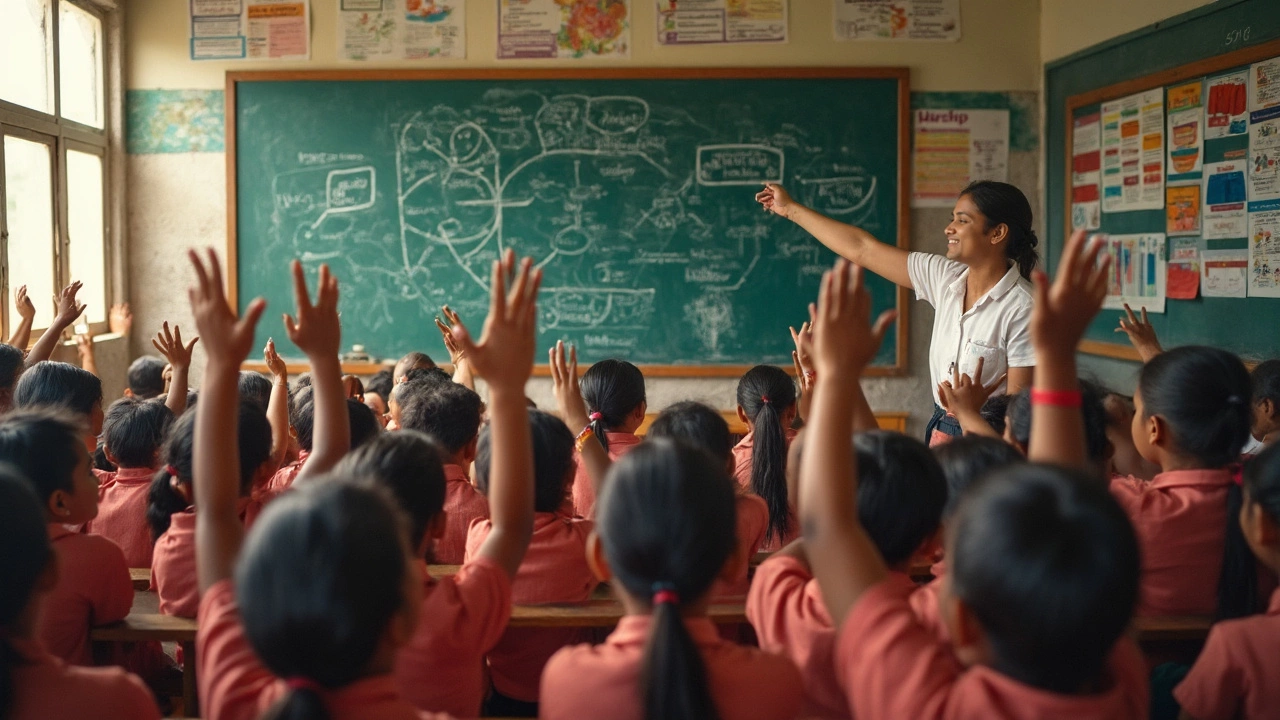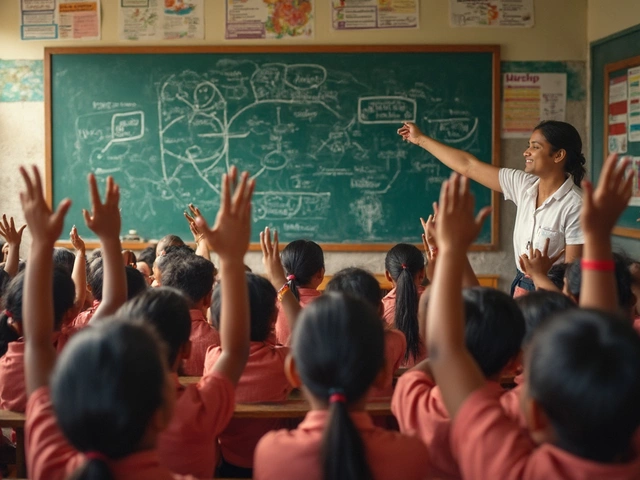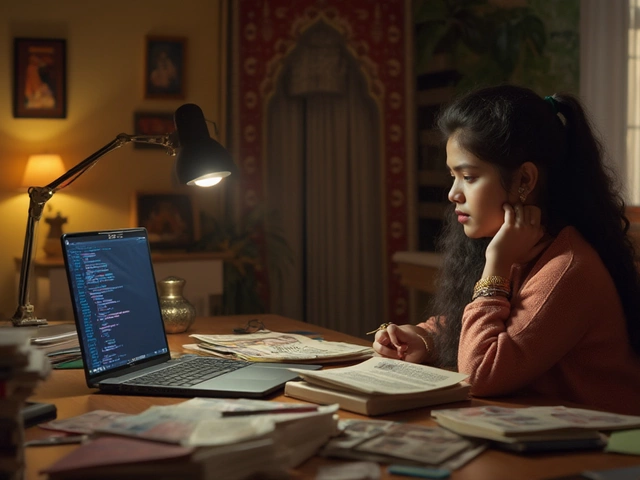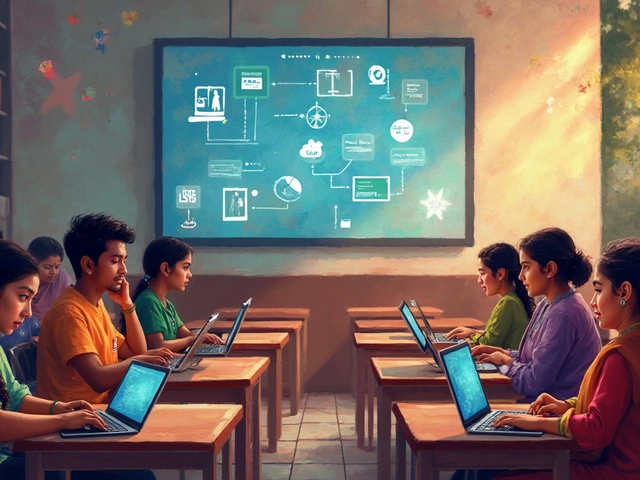Ask anyone about education in India, and you’ll hear about exam stress, the pressure to get good marks, and thousands of schools under boards like CBSE. With over 250 million students, India’s school system is bigger than almost any other country. But does size mean 'most educated'? Not quite.
Literacy rates in India have climbed a lot in the last few decades. Back in the 1950s, not even half the population could read and write. Fast forward to today, and more than three out of four Indians are literate. That’s progress. But if you stack these numbers against places like Japan or South Korea, where literacy hovers at 99%, you’ll see India has a way to go.
If you’re a student or parent curious about where Indian education stands, especially through the CBSE lens, it gets interesting. CBSE is everywhere—from small-town schools to big-city campuses. Understanding the real stats, the global context, and the power of the syllabus can actually help you navigate the system better. So what should you really pay attention to? Let’s break it down step by step, without hype or fuss—just facts, tips, and a good look at where India is headed.
- India’s Education by the Numbers
- Global Comparison: Where Does India Stand?
- Why the CBSE Syllabus Matters
- Tips for Students: Thriving in India's System
India’s Education by the Numbers
India’s education system stands out because of its huge scale. With about 1.4 billion people, India has more school-going kids than the entire population of some countries. Over 250 million children go to school here every year, which makes it one of the largest school systems in the world.
Now, let’s talk about the numbers that matter. Here’s a quick look at recent stats:
| Metric | Data (2023-24) |
|---|---|
| Total Students Enrolled (all levels) | ~255 million |
| Number of Schools | ~1.5 million |
| CBSE-Affiliated Schools | ~28,000 |
| Gross Enrollment Rate (Elementary) | ~98% |
| Gross Enrollment Rate (Secondary) | ~79% |
| Literacy Rate (Age 15+) | ~77.7% |
That’s a lot of young minds in classrooms. Most students are in government schools, but there’s a steady rise in private schools, especially in cities.
What do these numbers actually mean? The India education system is catching up fast, especially at the basic level. Pretty much every child starts primary school now, which just wasn’t the case 40 years ago. But as you go up the grades, the drop-off rate grows. Millions leave school before Class 12—mostly due to financial problems or family needs.
Here are some quick facts students and parents often want to know:
- India produces over 1.5 million engineers and 75,000 doctors each year.
- Competition for top colleges like IITs and AIIMS is huge, with acceptance rates less than 1%.
- Girls’ enrollment in school has jumped with schemes like Beti Bachao, Beti Padhao and mid-day meal programs.
If you’re with CBSE, you’re part of a system with nearly 23 million students taking board exams each year. That’s more than the population of some nations! But tons of students still lose out due to lack of access, support, or resources, especially in rural areas.
Global Comparison: Where Does India Stand?
Let’s get real—when people talk about the India education system, they’re usually thinking about the huge number of students and schools. But being the biggest doesn’t instantly put India at the very top. If we look at literacy and education stats across countries, India lands somewhere in the middle, not at the peak.
For example, India’s current literacy rate is around 77% as of 2024. That’s way up from past decades, but still behind countries like Finland, Japan, and Germany, where nearly everyone over 15 can read and write. Even within Asia, spots like South Korea and Singapore consistently rank in the top three globally in reading, science, and math in PISA tests—a worldwide exam that checks what students actually know.
If you want to see the numbers side by side, here’s how India and a few other countries stack up (based on UNESCO and World Bank data):
| Country | Literacy Rate (%) | School Life Expectancy (years) | Global Education Ranking |
|---|---|---|---|
| Finland | 99 | 17 | Top 5 |
| South Korea | 99 | 17 | Top 3 |
| India | 77 | 12 | 33 |
| Germany | 99 | 16 | Top 10 |
| United States | 99 | 16 | 13 |
Now, why does this gap exist? For one, India faces unique challenges—like a huge rural population, big differences between states, and access issues. Many Indian students still study in overcrowded classrooms or travel long distances just to find a CBSE school. The best schools in metros give tough competition globally, but this isn’t the norm everywhere.
You might hear global experts weighing in, too. The BBC once summed it up:
“While the Indian education system produces some of the world’s top engineers and doctors, access and quality remain uneven across the country.”
It’s not all a downer, though. India’s slow but steady climb in literacy and school-attendance rates is worth cheering for. Students here often learn in two or more languages, juggle different curricula, and manage some of the world’s toughest exams by the time they finish school. The brain drain to top universities abroad also shows that Indian students can easily stand shoulder to shoulder with the best in the world when given the right support.
For parents and students tuned into the CBSE syllabus, here’s a tip: keep an eye on global benchmarks like PISA, but don’t let them define your abilities. Focus on practical skills, language learning, and getting real-world exposure. That’s how you can close the gap and actually stand out, no matter what the rankings say.
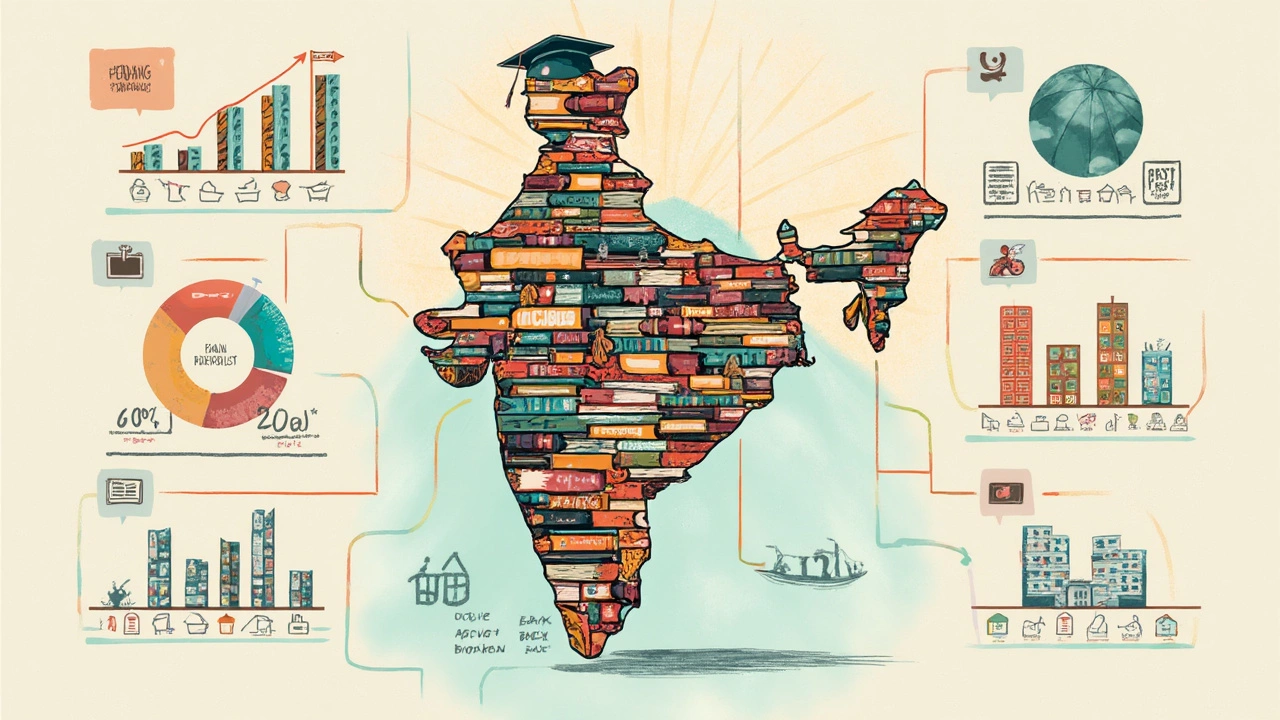
Why the CBSE Syllabus Matters
The CBSE syllabus isn’t just a set of textbooks and exams—it shapes how millions of Indian students learn. First off, CBSE stands for Central Board of Secondary Education, and it's been around since 1962. Over 27,000 schools in India (and about 240 in other countries) follow CBSE. That makes it one of the biggest school boards in the world.
One reason CBSE matters is its focus on both theory and problem-solving. Subjects like maths and science aren’t about mugging up; CBSE tries to get students thinking and connecting what they learn to real life. CBSE’s pattern of exams—multiple choice questions, case studies, and practical-based tables—gets students ready for tough entrance exams like NEET and JEE.
| CBSE Fast Facts | Details |
|---|---|
| Total Schools (2024) | ~27,000 in India, 240+ abroad |
| Exam Mediums | English, Hindi, and regional languages |
| Board Start Year | 1962 |
| Main Classes for Board Exams | 10th and 12th |
| Style of Assessment | MCQs, theory, practicals |
CBSE is known for sticking to the latest NCERT books, which means content is updated and standardized—no confusion between states. Its national-level structure helps students move or switch schools within India without getting lost in a new system. This consistency is a big deal for families who often relocate.
- CBSE links directly to many competitive exams, so you get practice on question types you’ll see later.
- The syllabus puts weight on application, not just rote learning, so it’s easier to remember concepts longer.
- CBSE schools make space for sports, arts, and practicals, not just theory.
Some critics say CBSE focuses too much on exams and sometimes rushes through important topics. But for most students seeking a well-recognized board and solid prep for higher studies or national tests, CBSE gives a decent leg-up.
Tips for Students: Thriving in India's System
Doing well in India's school system means playing smart, not just working non-stop. Since most students are part of the CBSE syllabus, it helps to know what actually works instead of just following the crowd.
First, let's bust a myth: mugging up everything doesn’t help long-term. CBSE has clearly shifted its focus. Many questions are now application-based, so it's about how well you understand ideas, not just how much you memorize. Here’s how you can do better without burning out:
- Make the NCERT books your go-to: More than 80% of CBSE board exam questions are taken straight from these textbooks. Know them inside out.
- Practice with old papers: Solving at least five years’ worth of previous question papers isn’t just tradition—it works. It gets you comfortable with the pattern and style of questions.
- Break up big topics: Don’t try to cover massive chunks at once. Split them into smaller parts and set mini-goals for your study sessions.
- Ask for help early: Teachers, friends, and even online forums can clear your doubts. Don’t let confusion pile up.
- Take real breaks: Walk, stretch, or just get away from the books for a short while. Short brain breaks help you stay fresh and remember better.
Managing your time is key, especially with subjects that need regular revision like Math and Science. A simple study table can help you track your progress. Here’s a sample of how Indian students usually divide their week:
| Subject | Hours per week (average) |
|---|---|
| Math | 6 |
| Science | 5 |
| English | 4 |
| Social Studies | 3 |
| Languages (Hindi, etc.) | 2 |
This isn’t a must-follow rule, but it shows the focus Indian students often give to tougher subjects.
If you’re stressed about results, remember: India's students face some of the highest exam pressures in the world. It's not just you. Talk to someone if it gets overwhelming—even top scorers do.
And if possible, look beyond textbooks. CBSE has started pushing for sports, arts, coding, and life skills. Taking up one extra activity can keep your mind balanced and even help you stand out when you finish school.
Quick tip—check if your school uses online portals for assignments or results. Over 70% of top CBSE schools have switched to digital platforms. It saves time, tracks your progress, and means you don’t lose paperwork at the last minute. If your school isn’t there yet, try using free apps to stay organized.
